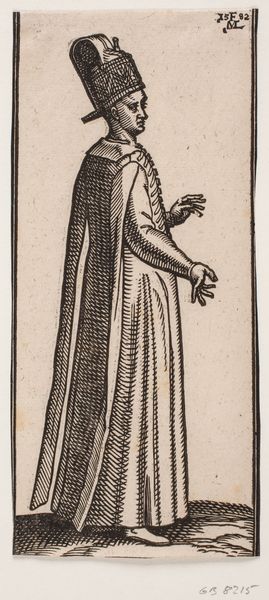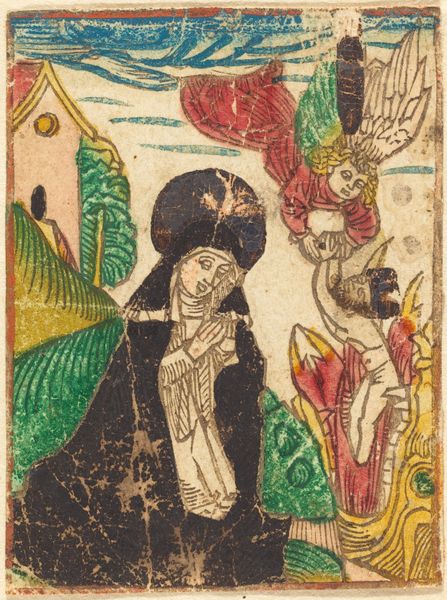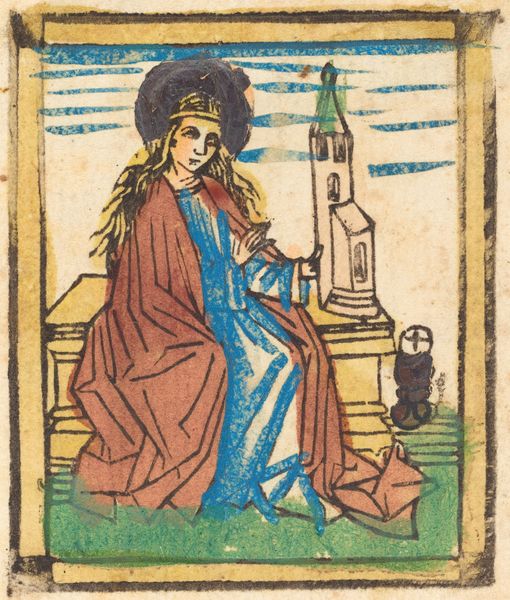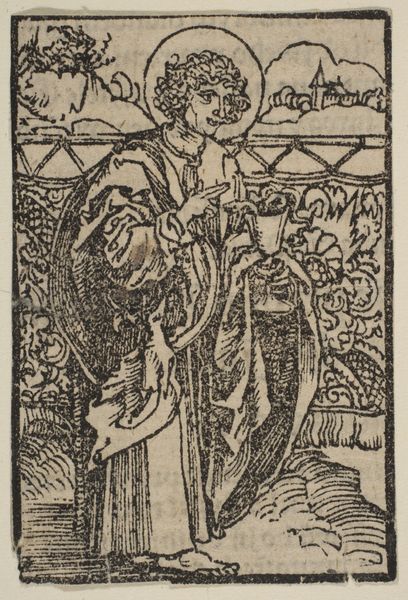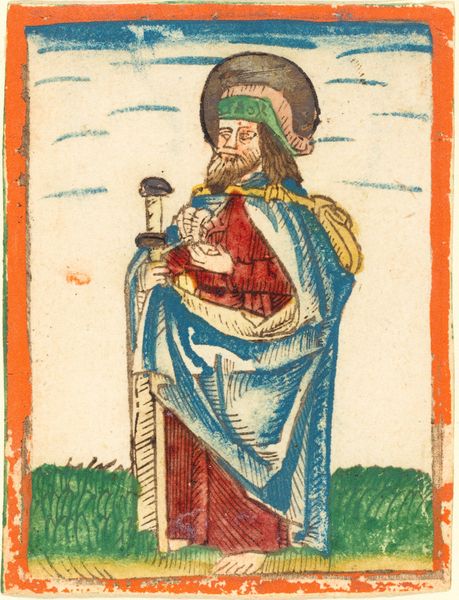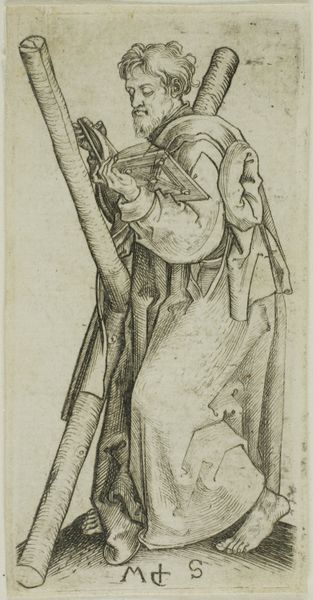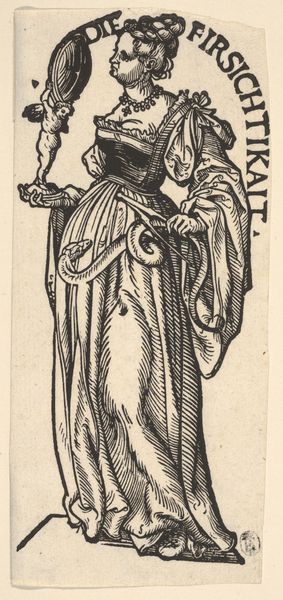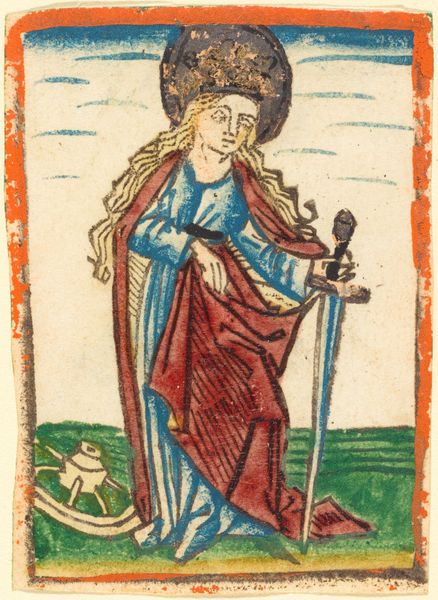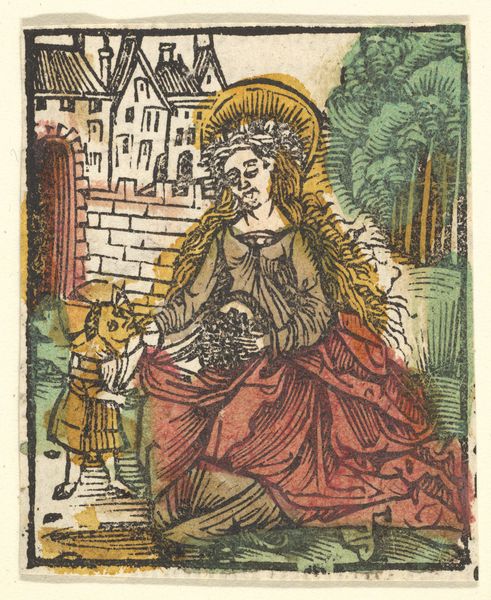
drawing, coloured-pencil, print, paper, ink
#
drawing
#
coloured-pencil
#
narrative-art
# print
#
figuration
#
paper
#
ink
#
coloured pencil
#
watercolour illustration
#
northern-renaissance
Copyright: National Gallery of Art: CC0 1.0
This simple rendering presents the Good Shepherd, a humble figure with a lamb resting upon his shoulders, a halo crowning his head. This pastoral image, seemingly simple, echoes through time. The shepherd motif is not new; long before Christianity, it symbolized leadership and care in ancient Near Eastern cultures. Kings were often called "shepherds of their people." This image was imbued with new meaning as it evolved: Christ, the Good Shepherd, tenderly carries the lost lamb, saving humanity from darkness. It is an allegory of divine love and protection, reflecting the long-held human desire for a benevolent guardian. Consider ancient Greek art, where similar figures bore animals in sacrificial offerings. The image of bearing an animal evolves across time. It is a physical burden, yes, but also a burden of responsibility, of care, and of love. It reflects humanity’s capacity to carry the metaphorical weight of the world. Thus, the Good Shepherd resonates through the ages, a testament to our shared longing for salvation, and a powerful symbol of cyclical return.
Comments
No comments
Be the first to comment and join the conversation on the ultimate creative platform.
